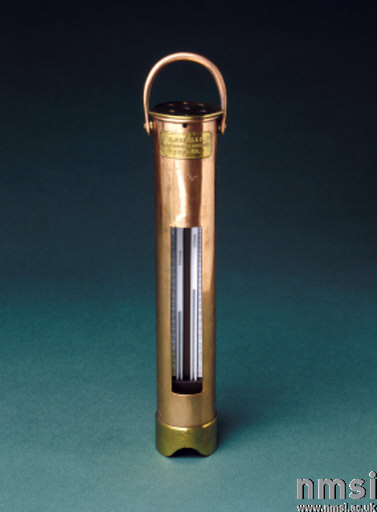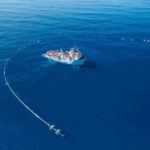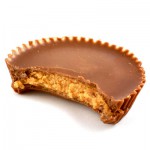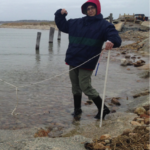Both Pictures from Igenious.org.uk

James Six (1731-1793) retired early from business to devote himself to the natural sciences. He is best known for the invention of the self-registering thermometer, first designed in 1780, which recorded the maximum and minimum temperatures reached. It was the most widely used thermometer for taking deep-sea temperatures until 1870. The thermometer’s susceptibility to pressure was addressed in 1869 by Dr W A Miller (1817-1870), then Vice-President of the Royal Society. Miller’s adaptation of Six’s design was made by the instrument maker L P Casella (1812-1897).

The bathythermograph is an instrument widely used to record the ocean temperature at various depths. It would be lowered from a moving vessel on a specially constructed cable and recorded the ocean temperature and the associated water pressure. Until the development of this thermometer, the thermocline (the layer of rapid temperature change between surface and deep water) had not been understood. The bathythermograph was able to show the structure of this layer more readily than could be achieved by measurements using a water bottle and thermometer. This instrument was made by S G Brown.






that looks just like the BT I used during SEA Semester (ah, the days of Niskin bottles and Secchi disks). Even then I remember it seeming so archaic-looking – something out of WWII. If I recall correctly, the temperature was recorded by etching a (gold coated?) glass slide inside. I assume newer, digital technology is available today?
Niskin bottles still bring a tear to my eye of found memories of my undergraduate years. Technology has indeed advanced quite a bit since these.
http://www.seabird.com/products/spec_sheets/911data.htm
There is a newer version available today it is called the UCTD or ‘Underway’ CTD from Ocean Science. It allows research quality CTD measurement from moving vessels: http://www.oceanscience.com/pdf/uctd_specs.pdf